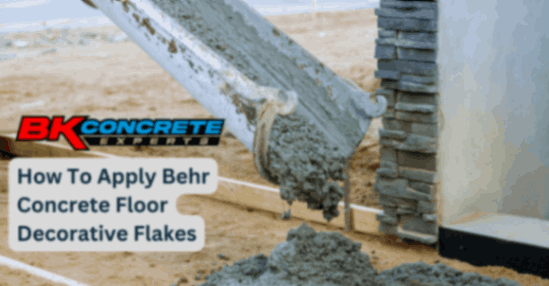Auto lifts are essential pieces of equipment for car enthusiasts and mechanics alike. They allow for easy access to the undercarriage of a vehicle and make maintenance and repairs much simpler. However, installing an auto lift requires a strong and stable foundation.
The weight of a vehicle on the lift, as well as the force and movement of the lift itself, can put a significant amount of stress on the concrete foundation. This is why it is crucial to properly reinforce the concrete before installing an auto lift.
The consequences of a poorly reinforced foundation can be catastrophic. A collapsed lift can cause damage to the vehicle, property, and potentially harm individuals nearby. In addition to safety concerns, an improperly reinforced foundation can lead to costly repairs and downtime.
Therefore, it is essential to take the necessary precautions to ensure the foundation can handle the weight and movement of the auto lift. In this article, we will explore the various methods of reinforcing concrete for auto lift installation to ensure safe and effective use.
Understanding Your Auto Lift’s Load Capacity and Requirements
The load capacity and requirements of an auto lift must be comprehensively understood in order to effectively reinforce the concrete for its installation.
Auto lifts are designed to carry different weights, which vary depending on the type of vehicle that will be lifted. Therefore, it is important to determine the weight capacity of the lift and ensure that it is properly supported by the concrete slab.
The design of the reinforcement should be based on the lift’s load capacity, the size of the lift, and the specific requirements of the manufacturer.
To determine the load capacity of the auto lift, it is important to take into account the weight of the vehicle and any additional equipment that may be mounted on it.
The weight capacity of the lift should be clearly stated in the manufacturer’s specifications, and it is important to ensure that the concrete slab can support this weight. If the weight capacity of the lift is not clearly stated, it is recommended to contact the manufacturer for assistance.
The reinforcement of the concrete for the installation of an auto lift should be designed to meet the specific requirements of the manufacturer. This may include the use of rebar or other structural elements to provide additional support to the slab.
The design of the reinforcement should also take into account the size and weight of the lift, as well as any additional equipment that may be mounted on it.
By understanding the load capacity and requirements of the auto lift, it is possible to ensure that the concrete slab is properly reinforced and can support the weight of the lift and any vehicles that will be lifted.
Adding Steel Reinforcement with Rebar or Mesh
Steel reinforcement through the use of rebar or mesh can dramatically increase the structural stability and load-bearing capacity of a concrete slab. Rebar, or reinforcing steel bars, are long cylindrical rods made of steel that are used to reinforce concrete. Mesh, on the other hand, is a welded wire fabric that is made up of a series of parallel and perpendicular wires that are welded at right angles to each other.
When reinforcing a concrete slab for an auto lift installation, the size and spacing of the rebar or mesh should be determined based on the load capacity and requirements of the lift. The reinforcing steel should also be placed in the bottom third of the slab to provide maximum support and prevent cracking. The use of rebar or mesh can also help to prevent cracking and shrinkage in the concrete due to temperature changes and other environmental factors.
To illustrate the size and spacing considerations for rebar or mesh reinforcement, the following table provides a general guideline based on the thickness of the concrete slab and the expected load capacity of the auto lift. It should be noted, however, that these guidelines are only a starting point and that the exact size and spacing of the reinforcement should be determined by a structural engineer or other qualified professional.
| Concrete Slab Thickness | Rebar Diameter | Rebar Spacing | Mesh Size | Mesh Spacing |
| 4 inches | 1/2 inch | 16 inches | 6×6 | 6 inches |
| 5 inches | 5/8 inch | 16 inches | 6×6 | 6 inches |
| 6 inches | 3/4 inch | 16 inches | 6×6 | 6 inches |
| 8 inches | 1 inch | 16 inches | 6×6 | 6 inches |
| 10 inches | 1 1/4 inches | 16 inches | 6×6 | 6 inches |
Overall, adding steel reinforcement through the use of rebar or mesh is an effective way to increase the stability and load-bearing capacity of a concrete slab for an auto lift installation. By following guidelines for size and spacing, and working with a qualified professional, you can ensure that your concrete slab is properly reinforced and meets the requirements of your auto lift.
Increasing Concrete Thickness and Compressive Strength
Increasing concrete thickness and compressive strength is a crucial factor in ensuring the stability and durability of a structure. When it comes to auto lift installations, it’s essential to reinforce the concrete to withstand the weight and force of the equipment.
One way to increase the thickness and strength of the concrete is to use high-grade concrete mixtures with a minimum compressive strength of 4,000 psi. This type of concrete can withstand heavy loads and resist cracking and deformation over time.
Another method to reinforce the concrete is to add admixtures, which are materials added to the concrete mixture to improve its properties. Admixtures such as silica fume, fly ash, and slag can increase the compressive strength of the concrete while also reducing its permeability, making it more resistant to water and chemical damage. Adding fibers to the mixture can also increase the strength and durability of the concrete by preventing cracks from forming and spreading.
In addition to using high-grade concrete mixtures and admixtures, proper curing of the concrete is also essential to increase its strength. The curing process involves maintaining a moist and controlled environment for the concrete to set and harden properly. This allows the concrete to attain its maximum compressive strength and durability.
In summary, increasing the thickness and compressive strength of the concrete, adding admixtures, and proper curing are crucial factors in reinforcing concrete for auto lift installations, ensuring the safety and longevity of the structure.
Consulting with a Professional Contractor
Consulting with a professional contractor can greatly enhance the quality and safety of lift installations. Professional contractors are trained and experienced in the field of construction and have the knowledge to provide expert advice and guidance on the best practices and materials to use for optimal performance, efficiency, and durability. They can also assist in ensuring that all safety standards and regulations are met during the installation process.
In order to reinforce concrete for auto lift installation, it is important to consult with a professional contractor who can provide guidance on the appropriate materials to use. One material that may be used is steel rebar, which can be placed within the concrete to enhance its strength and durability. Another material that may be used is epoxy-coated rebar, which provides additional protection against corrosion and extends the life of the concrete.
Consulting with a professional contractor also provides the opportunity to discuss the various options available for auto lift installation. A table outlining the different types of auto lifts and their respective advantages and disadvantages can help the audience make an informed decision about which type of lift is best suited for their needs. By working with a professional contractor, individuals can ensure that the concrete reinforcement and lift installation process is completed safely, efficiently, and to the highest quality standards.
| Type of Auto Lift | Advantages | Disadvantages |
| Scissor Lift | Takes up less space than other lifts | Lower lifting capacity |
| Two-Post Lift | Easy to use and access vehicle | Requires a more level surface |
| Four-Post Lift | Can lift heavier vehicles | More expensive |
| In-Ground Lift | Saves space and easy to use | Requires more maintenance |
| Mobile Column Lift | Can be moved around the shop | Requires more setup time |
Ensuring Safe and Effective Auto Lift Installation
One crucial aspect of auto lift safety and effectiveness is ensuring proper alignment and anchoring of the lift to the garage floor. The lift must be securely anchored to the concrete floor to prevent it from tipping over or shifting during use. The concrete must be strong enough to support the weight of the lift and the vehicles that will be lifted.
To reinforce the concrete for auto lift installation, it is important to consult with a professional contractor who has experience in this area. The contractor can assess the condition of the existing concrete and determine if any repairs or reinforcements are necessary. They can also recommend the appropriate type and thickness of concrete to use for the installation.
In addition to proper concrete reinforcement, it is important to follow all manufacturer instructions and safety guidelines when installing the auto lift. This includes ensuring that the lift is level and plumb, using the correct hardware and fasteners, and performing regular maintenance and inspections.
By taking these steps, you can ensure that your auto lift is safe and effective for years to come.
Frequently Asked Questions
What is the average cost of reinforcing concrete for an auto lift installation?
The average cost of reinforcing concrete for an auto lift installation can vary widely depending on several factors. For instance, the size of the lift and the weight capacity it can accommodate may impact the amount of reinforcement needed.
Additionally, the type of reinforcement material used may also affect the cost. Steel reinforcement bars are commonly used and may cost between $1.00 to $1.50 per pound, depending on the market. Other materials such as fiber reinforced polymer (FRP) may also be used and can cost more.
The installation process itself may also impact the final cost, as any necessary excavation or preparation work will add to the overall expense. Overall, the cost of reinforcing concrete for an auto lift installation will depend on several factors and should be evaluated on a case-by-case basis.
Will reinforcing the concrete affect the warranty of the auto lift?
Reinforcing the concrete for an auto lift installation should not affect the warranty of the lift as long as the installation is done properly and according to the manufacturer’s instructions. However, it is important to note that the warranty may not cover any damage caused by improper installation or use.
Reinforcing the concrete is important for the safety and stability of the lift, as it helps to distribute the weight of the lift and the vehicle it is supporting. The reinforcement method used will depend on the specific requirements of the lift and the load capacity of the concrete slab. Common methods include using steel rebar or wire mesh, and pouring a thicker concrete slab.
It is recommended to consult with a professional for proper installation and reinforcement to ensure the safety and longevity of the auto lift.
Can I install an auto lift on an existing concrete slab without reinforcement?
The installation of an auto lift on an existing concrete slab without reinforcement should be approached with caution. While it is possible to install an auto lift on an existing concrete slab, it is important to consider the weight capacity of the lift and the load-bearing capacity of the concrete slab.
Without reinforcement, the concrete slab may not be able to support the weight of the auto lift and the vehicle being lifted, leading to structural damage and safety hazards. It is recommended to consult a professional engineer to assess the load-bearing capacity of the existing concrete slab and determine if reinforcement is necessary to ensure the safe and proper installation of the auto lift.
How long does it take to reinforce concrete for an auto lift installation?
The duration for reinforcing concrete to support an auto lift installation can vary depending on several factors. The size and weight capacity of the lift, the existing condition of the concrete slab, and the type of reinforcement needed are some essential considerations.
Typically, the process involves drilling holes into the concrete, inserting steel rebar, and filling the holes with epoxy to ensure proper bonding. The concrete must then be allowed to cure for a minimum of 28 days before the lift can be installed.
However, this timeline may be extended if additional work is required, such as repairing cracks or adjusting the level of the slab. Therefore, it is crucial to consult with a professional engineer or contractor to ensure that the concrete is adequately reinforced and meets all safety requirements before installing an auto lift.
Are there any specific building codes or regulations that need to be followed when reinforcing concrete for an auto lift installation?
There are specific building codes and regulations that need to be followed when reinforcing concrete for an auto lift installation. These codes are established to ensure the safety of the auto lift and the individuals operating it.
The codes may vary depending on the location and jurisdiction of the building, but they typically include guidelines for the minimum thickness of the concrete slab, the type and size of reinforcement to be used, and the depth and width of the footings.
It is important to consult with a professional engineer or contractor who is knowledgeable in these regulations to ensure compliance and avoid potential safety hazards.
Conclusion
The installation of an auto lift requires careful planning and preparation to ensure the safety and effectiveness of the equipment. Reinforcing concrete is a critical aspect of the installation process that must be approached with precision and attention to detail.
By understanding the load capacity and requirements of your auto lift, you can determine the appropriate level of reinforcement needed to support its weight and ensure its stability. One effective method of reinforcement is the use of steel rebar or mesh, which can be added to the concrete mixture to provide additional strength and durability. Alternatively, increasing the thickness and compressive strength of the concrete can also improve its ability to support the weight of the auto lift.
It is important to consult with a professional contractor to determine the best approach for your specific installation needs. In conclusion, reinforcing concrete for auto lift installation is a vital step that requires careful consideration and implementation. By taking the time to understand the load capacity and requirements of your equipment, and consulting with a professional contractor, you can ensure a safe and effective installation that will provide long-term reliability.
So, are you ready to reinforce your concrete and take your auto lift installation to the next level?

 CALL US NOW
CALL US NOW



